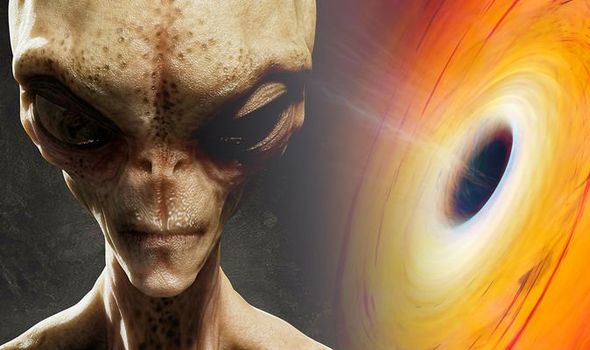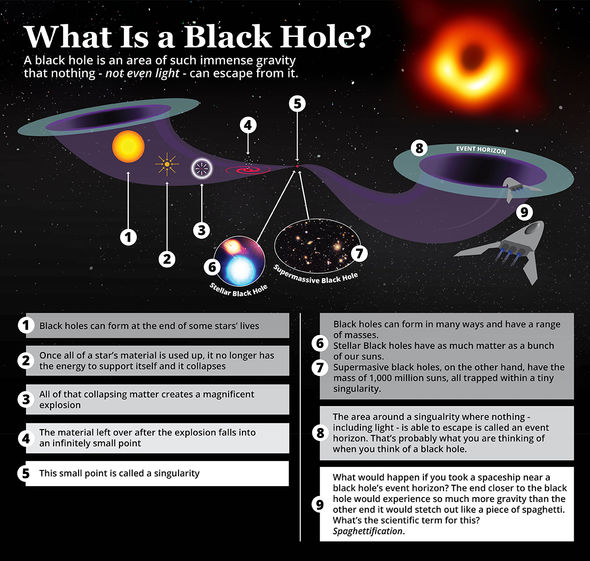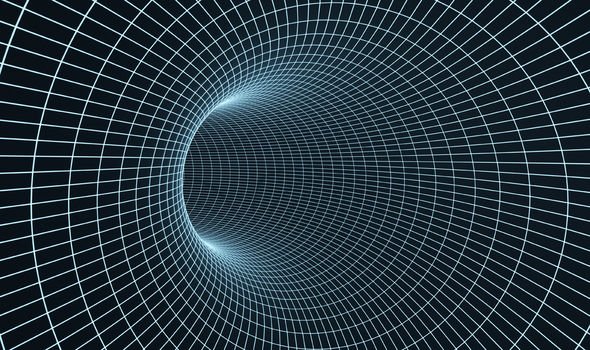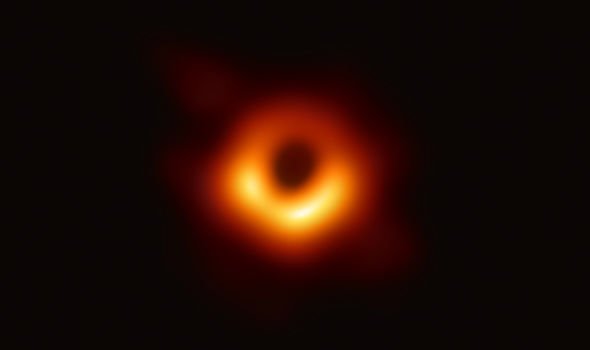BLACK HOLES really could be harnessed by advanced alien civilisations, according to a theory been proven for the first time.
The 50-year-old theory started as speculation about how an alien civilisation could use a black hole to generate energy. In 1969, British physicist Professor Roger Penrose proposed energy could be generated by lowering an object into the black hole’s ergosphere, the outer layer of the black hole’s event horizon.
The object would have to move faster than the speed of light in order to remain still.
Professor Penrose predicted the object would acquire a negative energy in this extreme region of space.
By dropping the object and splitting it in two so that one half falls into the black hole while the other is recovered, the recovered half would gain energy extracted from the black hole’s rotation.
However, the sheer scale of the engineering challenge the acclaimed physicist suggested only a very advanced, perhaps alien, race could achieve the task.

Black hole news: The theory started as speculation about how aliens could use a black hole (Image: Getty)

Black hole news: Researchers have finally found a way to experimentally demonstrate the effect that Penrose and Zel’dovich proposed (Image: Express)
Two years later, another physicist Dr Yakov Zel’dovich suggested the theory could be tested with a more practical, earthbound experiment.
The Soviet scientists proposed “twisted” light waves, hitting the surface of a rotating metal cylinder turning at just the right speed, would end up being reflected with additional energy extracted from the cylinder’s rotation thanks to a quirk of the rotational Doppler effect.
But Dr Zel’dovich’s idea was considered untestable because, for the experiment to work, his proposed metal cylinder would need to rotate at least a billion times a second.
But, University of Glasgow’s School of Physics and Astronomy researchers have finally found a way to experimentally demonstrate the effect that Penrose and Zel’dovich proposed.

Black hole news: The theory was first proposed by British physicist Professor Roger Penrose (Image: Getty)
This is achieved by twisting sound instead of light, which has a much lower frequency source and so easier to test in the lab.
The researchers built a system incorporating a small ring of speakers to create a twist in the sound waves similar to the twist in the light waves proposed by Dr Zel’dovich.
Those twisted sound waves were directed towards a rotating sound absorber made from a foam disc. A set of microphones behind the disc picked up the sound from the speakers as it passed through the disc, which steadily increased the speed of its spin.
What the team were looking to hear in order to know that Penrose and Zel’dovich’s theories were correct was a distinctive change in the frequency and amplitude of the sound waves as they travelled through the disc, caused by the doppler effect.
Marion Cromb, a PhD student in the University’s School of Physics and Astronomy and the paper’s lead author, said: “The linear version of the doppler effect is familiar to most people as the phenomenon that occurs as the pitch of an ambulance siren appears to rise as it approaches the listener but drops as it heads away.
“It appears to rise because the sound waves are reaching the listener more frequently as the ambulance nears, then less frequently as it passes.
“The rotational Doppler effect is similar, but the effect is confined to a circular space.
“The twisted sound waves change their pitch when measured from the point of view of the rotating surface.

Black hole news: Physicist Dr Yakov Zel’dovich suggested how the theory could be tested in 1971 (Image: Getty)

Black hole news: A 50-year-old theory purportedly proves how aliens could exploit a black hole (Image: Express)
“If the surface rotates fast enough then the sound frequency can do something very strange—it can go from a positive frequency to a negative one, and in doing so steal some energy from the rotation of the surface.”
As the speed of the spinning disc increases during the researchers’ experiment, the pitch of the sound from the speakers drops until it becomes too low to hear.
The pitch then rises back up again until it reaches its previous pitch—but louder.
The resulting amplitude was as much as 30 percent greater than the original sound coming from the speakers.
Mr Cromb added: “What we heard during our experiment was extraordinary.
“What’s happening is that the frequency of the sound waves is being Doppler-shifted to zero as the spin speed increases.
“When the sound starts back up again, it’s because the waves have been shifted from a positive frequency to a negative frequency.
“Those negative-frequency waves are capable of taking some of the energy from the spinning foam disc, becoming louder in the process—just as Zel’dovich proposed in 1971.”
source: express.co.uk







